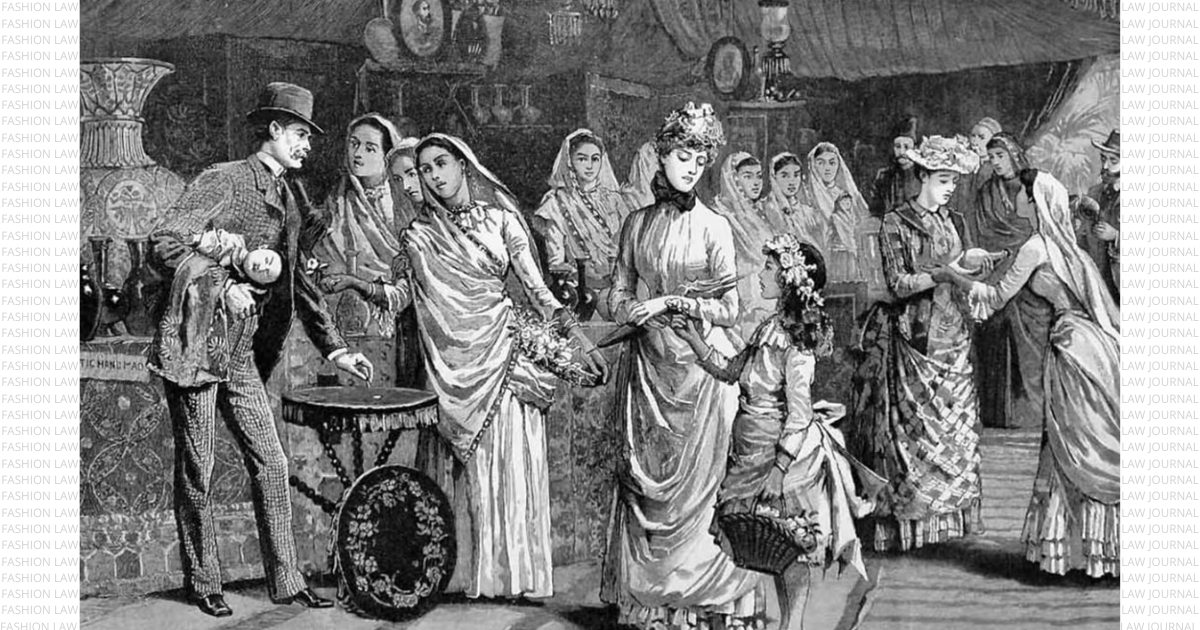INTRODUCTION
“A nation is not built by bricks and mortar, but by the traditions, culture, and beliefs of its people.” – Rabindranath Tagore , Indian poet.
Fashion has played a profound role in anti-colonial movements across the world, not merely as a cultural artifact but as a potent symbol of resistance. From India’s khadi movement to Algeria’s veiling practices, traditional attire often emerged as a counter-narrative to colonial domination, reflecting both political defiance and the assertion of indigenous identity. The intersection of fashion and law becomes particularly important in understanding colonial strategies to criminalize indigenous attire, suppress local industries, and enforcement of Western standards.
HISTORICAL ANALYSIS
Colonial regimes, from the 15th century to the mid-20th century, commonly enacted laws to suppress traditional clothing. It was associated with backwardness or rebellion.[1] Legal restrictions served dual purposes: economic exploitation through enforced dependency on Western goods and cultural domination by undermining indigenous pride and traditions. These laws were contributory in creating systemic disenfranchisement, which had long-term implications for cultural identity and socio-economic structures.[2]
Colonial powers systematically used taxation and trade laws to suppress indigenous fashion industries. For instance, the British levied heavy duties on Indian textiles while flooding the market with inexpensive British-made fabrics. This dual approach devastated India’s textile industry, reducing once-thriving towns like Dhaka to poverty.
Sooner or later, the silenced were bound to begin revolting back through symbolism weaved into their attire. “Khadi is the sun of the village solar system. The planets are the various industries which can support khadi in return for the heat and light they derive from it.” – Mahatma Gandhi; Indian lawyer, anti-colonial nationalist, and political ethicist. The khadi movement in India, advocated by Gandhi, epitomized fashion as a form of protest. Gandhi’s promotion of hand-spun and hand-woven khadi directly challenged the British monopoly on textile production, which was enforced through laws such as the Salt Tax and the imposition of textile duties on Indian products. These laws ensured the economic dependency of Indian weavers on British imports. The symbolic act of spinning khadi became a form of civil disobedience. The boycott of British textiles not only undermined the colonial economy but also galvanized rural employment and self-sufficiency, making them the two faces a coin known to be as Swadeshi movement.[3]
French policies heavily taxed Vietnamese-produced textiles, making local production less competitive compared to imports from France. They promoted Western fashion as a symbol of modernity and superiority, pressuring the Vietnamese elite to abandon traditional clothing. The Duy Tân Movement (Modernization Movement) in the early 20th century was revolutionary in cultural and political resistance against French rule. Founded in 1904 by Phan Bội Châu and Phan Châu Trinh, the movement sought to modernize Vietnam while preserving its cultural identity.[4] The ao dai was modernized by Cát Tường (Le Mur), a Vietnamese designer, who blended traditional and modern elements to make it more adaptable to contemporary tastes while retaining its cultural essence which allowed the garment to thrive as both a fashion statement and a cultural emblem during this period.[5]
In South Africa, laws indirectly targeted indigenous attire by imposing Western clothing standards in urban areas. These laws alienated indigenous populations, reinforcing a narrative of cultural inferiority and erasure. Post-apartheid legal reforms, such as the Promotion of Equality and Prevention of Unfair Discrimination Act of 2000, sought to rectify these injustices by promoting cultural diversity[6]. However, the legacy of these laws persists in socio-economic disparities and cultural alienation.
Likewise, in French Algeria, traditional Berber clothing and the haik (veil) were banned in public spaces. The haik became a symbol of anti-colonial resistance during the War of Independence. The French colonial administration viewed veiling as a challenge to assimilation policies and often conducted public unveilings as a show of dominance. “In the colonial context, the colonized’s efforts to liberate himself are a violent act that restores his self-worth.” – Frantz Fanon, Algerian revolutionary. Algerian women, however, used the veil to assert their cultural identity and solidarity with the nationalist movement. Post-independence, the haik retained its status as a marker of national identity, influencing legal frameworks that recognized cultural rights.[7]
Post-colonial nations faced the challenge of rebuilding industries decimated by colonial exploitation. In India, the Khadi and Village Industries Commission (KVIC)[8] was established to revive rural economies through the promotion of handloom products. Similarly, Algeria implemented policies to preserve traditional crafts as part of its cultural heritage such as the National Agency for the Promotion and Development of Crafts (Agence Nationale de l’Artisanat), which provides training, funding, and marketing support to artisans.[9]
Internationally, the legacy of colonial restrictions on textile trade is evident in modern trade agreements. Developing countries often advocate for fairer trade practices, still negotiating from the shadows of historical injustices of colonial-era tariffs and monopolies.[10] Legal frameworks like the TRIPS Agreement of 1994 address issues of intellectual property and traditional knowledge, offering avenues for the protection of indigenous designs and techniques. It mandates protection for geographical indications (GIs), enabling communities to safeguard products rooted in traditional knowledge. Articles 22–24 of TRIPS ensure recognition and protection of these GIs[11]. Plus, the agreement allows for the registration of traditional designs under copyright, industrial design, or trademark laws, depending on the jurisdiction. Member states are also encouraged to integrate customary laws to prevent the misappropriation of indigenous knowledge.
CONCLUSION
The role of fashion in anti-colonial movements shows the interplay between cultural identity and legal systems. By criminalizing indigenous attire and imposing Western norms, colonial regimes sought to erase local identities. However, the resistance to these measures—whether through Gandhi’s khadi movement or Algeria’s veiling practices—proves the resilience of cultural expression as a tool for political defiance. Post-colonial legal frameworks continue to grapple with the legacies of colonial restrictions, working present day to restore and protect traditional industries and identities.
Author: Nutan Kharat | 3rd Year BBA LLB | University of Mumbai Thane Sub-Campus
[1] https://doi.org/10.1017/9781108862349
[2] https://research.colonialwilliamsburg.org/Foundation/journal/Winter03-04/clothing.cfm last accessed 21.11.24
[3] https://indianculture.gov.in/timeless-trends/history-clothing-colonial-india last accessed 21.11.24
[4] https://vietnamjournal.ru/2618-9453/article/view/84258/64625 last accessed 21.11.24
[6] https://doi.org/10.1017/S016511530001860X
[7] https://doi.org/10.1177/0265691414556060
[8] The Khadi and Village Industries Commission Act, 1956
[9] https://www.dunemagazine.net/articles/traditional-craftsmanship-and-modernity-in-algeria last accesed on 21.11.24
[10] https://doi.org/10.1093/icon/moab082
[11] https://www.wipo.int/edocs/pubdocs/en/wipo_pub_952_2021.pdf
















